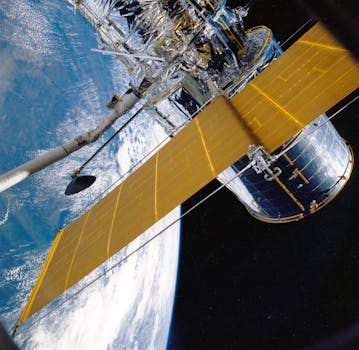
Introduction to the Future of Satellites
The future of satellites is an exciting and rapidly evolving field, with advancements in space technology and increasing demand for global connectivity. As the world becomes increasingly reliant on digital communication, the importance of satellites in facilitating this communication cannot be overstated. With the launch of new satellite constellations and the development of innovative technologies, the future of satellites is looking brighter than ever. The future of satellites is poised to revolutionize the way we communicate, navigate, and access information.
Satellites have been a crucial part of modern communication systems for decades, providing a means of transmitting data, voice, and video signals over long distances. However, the traditional satellite industry has been limited by high launch costs, limited bandwidth, and restrictive regulatory frameworks. The future of satellites is set to change this, with the emergence of new technologies and business models that are making satellite-based communication more accessible, affordable, and efficient.
Advancements in Space Technology
One of the key drivers of the future of satellites is the advancement of space technology. New materials, designs, and manufacturing techniques are enabling the production of smaller, lighter, and more powerful satellites. This, in turn, is reducing launch costs and increasing the efficiency of satellite operations. For example, the development of 3D printing technology is allowing satellite manufacturers to produce complex components quickly and cheaply, reducing the time and cost associated with traditional manufacturing methods.
Another significant advancement in space technology is the development of reusable launch vehicles. Companies such as SpaceX and Blue Origin are pioneering the use of reusable rockets, which are significantly reducing the cost of accessing space. This is making it more viable for companies to launch satellites into orbit, which is driving growth and innovation in the satellite industry.
Innovations in Satellite Constellations
Satellite constellations are a key area of innovation in the future of satellites. A constellation is a group of satellites that work together to provide global coverage and connectivity. The development of new satellite constellations is enabling the provision of high-speed, low-latency communication services to remote and underserved communities around the world.
One example of a satellite constellation is the Starlink constellation developed by SpaceX. This constellation consists of thousands of small satellites in low Earth orbit, which provide high-speed internet access to users around the world. Other companies, such as OneWeb and Amazon’s Kuiper Systems, are also developing satellite constellations to provide global connectivity.
Conclusion and Future Prospects
In conclusion, the future of satellites is an exciting and rapidly evolving field, with advancements in space technology and increasing demand for global connectivity driving growth and innovation. The development of new satellite constellations, reusable launch vehicles, and innovative technologies is making satellite-based communication more accessible, affordable, and efficient. As the world becomes increasingly reliant on digital communication, the importance of satellites in facilitating this communication will only continue to grow.
The future prospects for the satellite industry are bright, with opportunities for growth and innovation in a range of areas, including satellite manufacturing, launch services, and ground equipment. As the industry continues to evolve, we can expect to see new and innovative applications of satellite technology, from providing connectivity to remote communities to enabling the development of new industries such as space tourism and asteroid mining.




